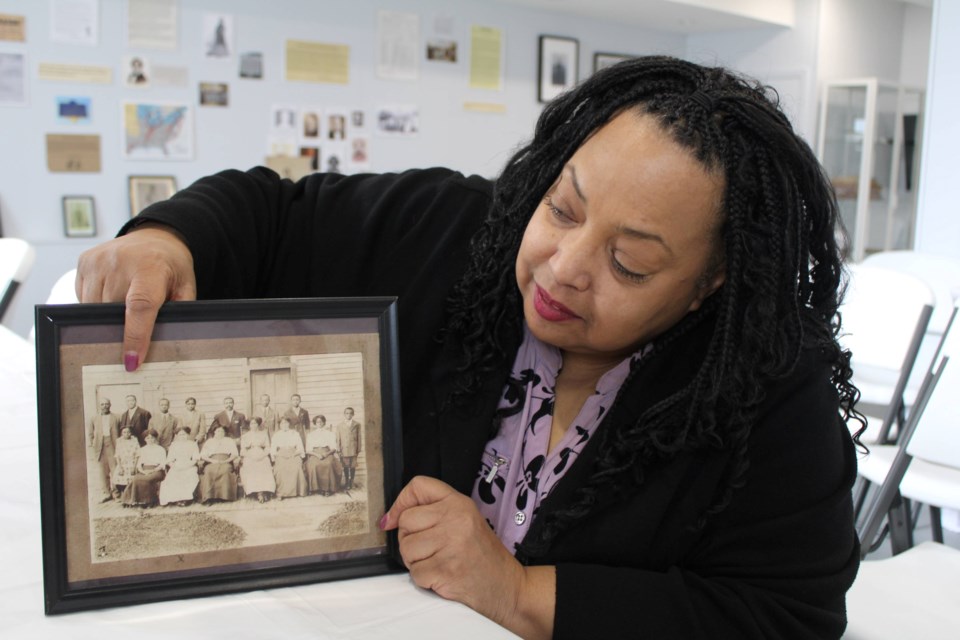IN CASE YOU MISSED IT: A version of article was originally published by ThoroldToday on February 13.
Tracing Black History in Niagara is not an easy task, Rochelle Bush says.
As the owner and principal guide for Tubman Tours, Bush is a bit of a guardian for Black History in Niagara. And while she spends her days telling others of Niagara’s Black History, she has always wanted to delve deeper into her own family and its place in Niagara. In fact, it’s a project she started while still a teen but – as is often the case – life happened, and her research was put on hold.
During the COVID-19 pandemic, the St. Catharines resident resumed her quest. Logging on to Ancestry.ca, she rooted through documents to see what she could find. She was looking for evidence of the stories she had heard that linked her family to Harriet Tubman via her great-great grandfather, a one-time minister at the Salem Chapel BME Church in the Garden City.
“In my own family history, we were always told that my great, great grandfather, was the minister in charge — for a period of time when Harriet Tubman was here," Bush said. "He was affectionately known as Rev. James Henry Harper and he was part of the Underground Railroad."
But given the times, Bush wasn’t sure how James would have been free to travel the country as a minister.
“How can this guy be an African Methodist Episcopal minister and travel all over in the United States when the 1850 fugitive slave law is active? How come he could go anywhere everywhere?”
Turns out Harper was not a slave but he was born a free man in South Carolina.
“That explains everything,” Bush said.
Her great, great grandfather’s story shows the difficulty that can be encountered tracing Black History. Often, there is little in the way of documentation. Bush had to really dig when she set about researching her family. Luckily, she managed to find out information on both her great grandmother and great grandfather.
Bush traced the life of her great grandmother Esther Williams to when she was “living as a waif in the streets of Port Robinson,” now a part of Thorold.
“It's very hard to trace the women, because you don't know how many times the name changed,” Bush said. “Men have one surname; women could be married three or four times.”
Anna O’Hare, chair of Thorold’s Heritage Committee, agreed and told ThoroldToday that it has been a struggle to find information on Black History in the city.
“In the late 18th century and around the War of 1812, first of all, there weren't that many Black people here,” she said. “It was about 700 or 800 and most of them were enslaved.”
O’Hare suspects the names are hard to find because Thorold wasn’t a destination for African Americans escaping slavery. More than likely, many simply came through Thorold before moving on to other locations.
“And because Thorold was a smaller town, there was probably even less to be found here than, say, Niagara-on-the-Lake, or Niagara Falls or those areas.”
O’Hare said the heritage committee did find one man – a member of the Coloured Corps formed by Richard Pierpoint prior to the War of 1812 – who remained in Port Robinson after the war. The man, Henry Lowery, went on to serve as a police officer during the construction of the first Welland Canal.
“From what I read; he stayed in Port Robinson and was a highly respected citizen,” O’Hare said.
Tami Friedman, associate professor and chair for the Department of History at Brock University, said O’Hare was correct in thinking many of those escaping slavery south of the border did not stay put in places like Thorold, but rather moved on to areas where other African Americans had settled.
“People of African descent came up here and followed patterns that are very similar to what you see in lots of different migrant communities, in the sense that they are settled in places where other fugitives and free people of African descent had already settled, and where those folks were already building community institutions like churches and schools,” Friedman said.
So, the larger cities – places like St. Catharines, Niagara Falls, Chatham and Toronto became likely destinations.
“People were gravitating toward those communities,” she said.
But African Americans also faced discrimination, with limited opportunities available to them, Friedman said.
“As people of African descent, most male fugitives, which was the vast majority of those who came up here, would have found work as common labourers,” Friedman said. “In some cases, I know that I've come across a reference to some of them getting jobs as, for example, porters in hotels. Women would have gotten work almost exclusively as domestic servants, so they'd be working as cooks, maids, washer women, working for white families.”
Bush, meanwhile, said she will continue her research into her family but she knows she must be patient.
“I just know that it takes a lifetime,” Bush said. “It's not something that you can do overnight, and it's not anything that can be done quickly. You have to remain committed.”
